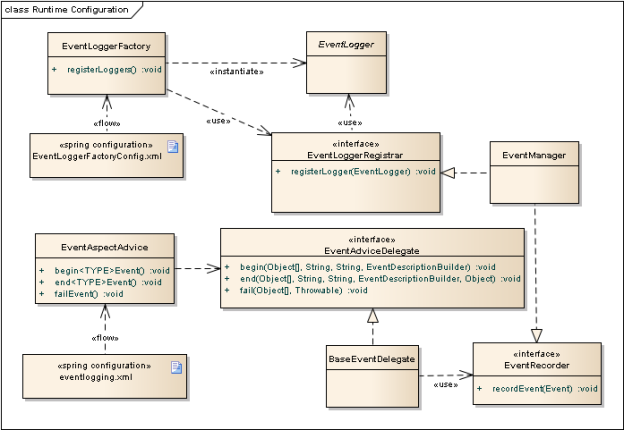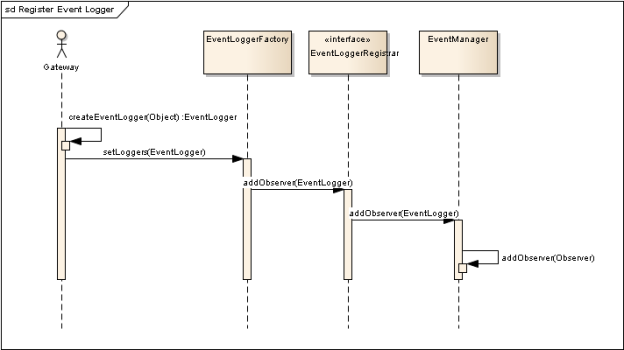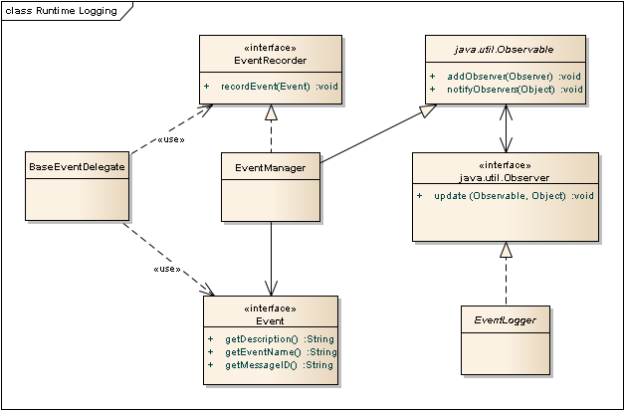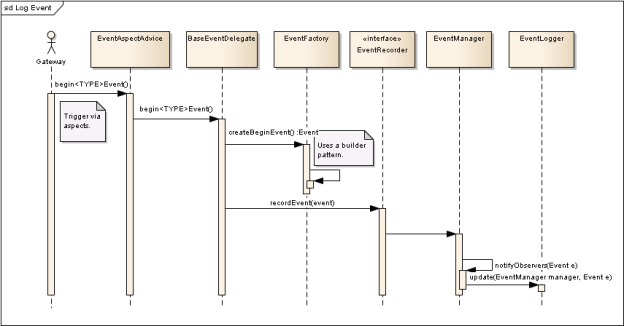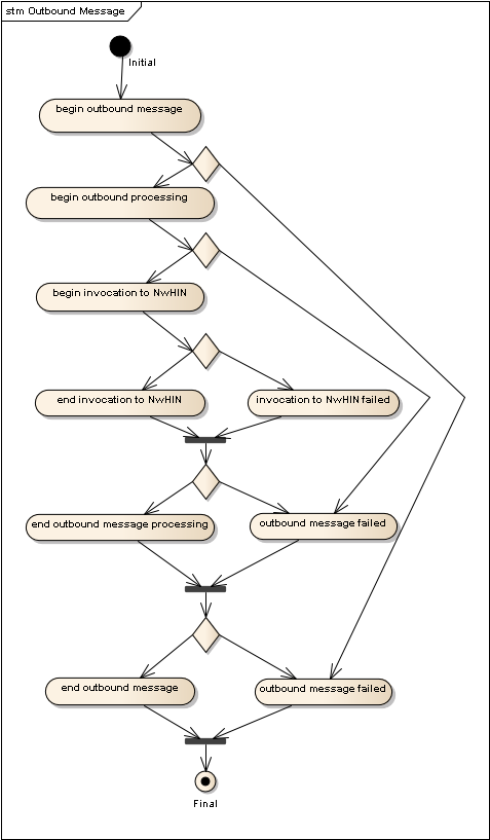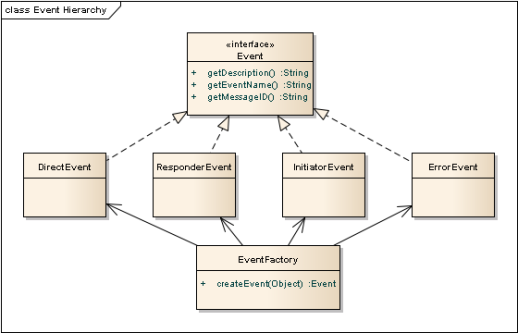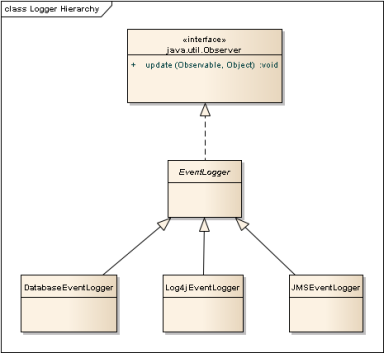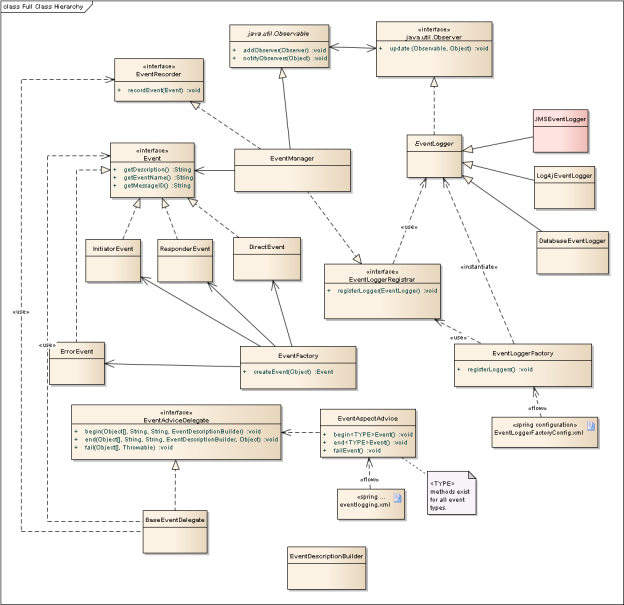Event Logging Approach
| Version | Date | Author | Description |
|---|---|---|---|
| 1.0 | 02/27/2013 | Leslie Power | Initial Document |
| 1.1 | 08/15/2016 | Tabassum Jafri | Updated MessageID in Common Extraction section. |
| 1.2 | 08/25/2016 | Tabassum Jafri | Updated definitions of elements in Common Extraction section. |
| 1.3 | 08/26/2016 | Tabassum Jafri | Included the missing database columns. |
| 1.4 | 09/01/2016 | Tabassum Jafri | Updated document with PRL comments. |
Business Requirements
There are two formal high level business goals, supported by multiple requirements. The two goals are that
CONNECT will provide the ability to count and produce durations for the following values:
- Number of a given transaction type (PD, QD, RD, etc.)
- Number of a given transaction group
- Number of transactions from a specific gateway
- Total duration for given transaction type
- Total duration for a given transaction group
CONNECT will be able to track and report on the following data points:
- Error
- Performance
- Transaction Type
- Payload
- Error Messages log (without PHI data)
Design Considerations and Design Decisions
In addition to the articulated business requirements, the CONNECT team considered the following non-functional requirements:
Category | Requirement |
Performance | The Performance Test Plan requirements are incorporated by reference. For testing purposes we use the database event logger |
Modifiability | Adopters must be able to create their own logging repository. The creation of new logging repositories is a development-time activity |
Modifiability | Adopters must be able to choose what logging repository to log events to. The decision of target repositories is a deployment-time activity |
Modifiability | Adopters must be able to create new events and trigger those events at runtime points of their own choosing. This is a development-time activity |
Reusability | Event logging should be minimally coupled to the existing adapters and gateway implementations. Adopter adapter implementations should be able to reuse event logging without modification to the event logging subsystem |
Reusability | Logging repositories should not depend on the structure of the services being logged. Put another way, an entirely new service or new version of an existing service should not require logging repository changes |
Design Approach
Initialization
Initialization is performed via Spring configuration. We have two configuration files, corresponding to the event recording and event creating subsystems. Event recording is initialized via the EventLoggerFactoryConfig.xml file. Zero, one, or multiple EventLogger instances can be created and registered with the EventLoggerRegistrar. Adopters may choose to write their own configuration file or may call EventLoggerRegistrar.registerLogger at runtime with their own EventLoggers. The default configuration has two consumers for the events: one to write the data to a file and the other to save it to a database. This is a producer-consumer pattern. The transport of the events is extensible, and the default implementation is an asynchronous callback. This callback can be extended to send a JMS message or make a remote call.
Event creation is initialized via eventlogging.xml. The CONNECT team has chosen an aspect approach. Adopters must annotate their methods with the appropriate event annotation and the logging subsystem will record entry and exit. Alternatively, adopters can write their own EventAdviceDelegate and initialize it instead of the BaseEventDelegate.
Event recording and event creation are tied together via the EventManager class. EventManager is the concrete implementation of both EventLoggerRegistrar and EventRecorder.
Runtime
The following classes are involved in the runtime creation and recording of an event as described in the sequence diagram that follows.
Before the event loggers can log any event, the event must be registered. Events signaled before an event logger is registered will not be logged.
Lifecycle
The lifecycle of a NwHIN message contains many discrete parts that work together in order to process a complete transaction. Each discrete part can be referred to as an "event." The Event Logging framework gives CONNECT the ability to record these events. The framework has been developed in a generic way so that CONNECT users can easily extend our model to collect information on whatever aspects of the system their business needs require. With a better view of the lifecycle and the time between each event, it is possible to generate various reports such as performance, load, and failures. Listed below are true events, meaning they are related to the lifecycle of the processing of a message. However, the events aren't limited to only these lifecycle events, and the design allows for clear extension for events and event loggers.
Event Name | Lifecycle | Trigger Point |
BEGIN_INBOUND_MESSAGE | Responding GW | Responding gateway receives a message from the NwHIN |
END_INBOUND_MESSAGE | Responding GW | Responding gateway sends a response message over the NwHIN |
BEGIN_INBOUND_PROCESSING | Responding GW | Beginning of the responding gateway's processing |
END_INBOUND_PROCESSING | Responding GW | After the responding gateway has formulated a response |
BEGIN_DELEGATION_TO_ADAPTER | Responding GW | Messages are delegated to the adapter for additional processing |
END_DELEGATION_TO_ADAPTER | Responding GW | After the adapter has processed the message and formed a response |
BEGIN_OUTBOUND_MESSAGE | Requesting GW | Requesting gateway receives a message from an adapter |
END_OUTBOUND_MESSAGE | Requesting GW | Requesting gateway responds to a message from the adapter |
BEGIN_OUTBOUND_PROCESSING | Requesting GW | At the beginning of the requesting gateway's processing |
END_OUTBOUND_PROCESSING | Requesting GW | At the end of the requesting gateway's processing |
BEGIN_INVOCATION_TO_NWHIN | Requesting GW | Message is sent to the responding gateway |
END_INVOCATION_TO_NWHIN | Requesting GW | Response is returned from the responding gateway |
MESSAGE_PROCESSING_FAILED | Any | Any time and represents a failure |
Responding Gateway Life-Cycle State Diagram
Below are two diagrams depicting the life cycles as events for both inbound messages and outbound messages.
An inbound message that has successfully been responded to will record BEGIN_INBOUND_MESSAGE, BEGIN_INBOUND_PROCESSING, BEGIN_DELEGATION_TO_ADAPTER, END_DELEGATION_TO_ADAPTER, END_INBOUND_PROCESSING and END_INBOUND_MESSAGE in order. By analyzing the time differences between the BEGIN_INBOUND_MESSAGE and END_INBOUND_MESSAGE, one can tell how long it took to respond to a NwHIN request. Failures can occur after any BEGIN event. In the case of failure, a MESSAGE_PROCESSING_FAILED event will be logged instead of the matching END event. Every BEGIN will be paired with either an END or a FAILED event. Note that it is possible for one step in the processing chain to fail and an outer BEGIN/END pair to complete normally.
Requesting Gateway Life-Cycle State Diagram
An outbound message that has been successfully transmitted will record the following events in order: BEGIN_OUTBOUND_MESSAGE, BEGIN_OUTBOUND_PROCESSING, BEGIN_INVOCATION_TO_NWHIN, END_INVOCATION_TO_NWHIN, END_OUTBOUND_PROCESSING, and END_OUTBOUND_MESSAGE. By analyzing the time differences between BEGIN_OUTBOUND_MESSAGE and END_OUTBOUND_PROCESSING, one can tell how long it took to make a NwHIN request. Failures can occur after any BEGIN event. In case of failure, a MESSAGE_PROCESSING_FAILED event will be logged instead of the matching END event. Every BEGIN will be paired with either an END or a FAILED event. Note that it is possible for one step in the processing chain to fail and an outer BEGIN/END pair to complete normally.
Class Diagrams
Extension Points
Events
By implementing the Event interface any class can become a new event. The EventManager has no knowledge about the Event implementation class--making this an ideal location for extension.
Event Loggers
Extending the abstract EventLogger and registering it with the EventManager. The new EventLogger is notified whenever an event occurs. EventManager has no knowledge about concrete EventLogger classes--making it an ideal location for extension.
Database Design
We use a single table to capture event information. Each event is a separate row in the database.
Field | Type | Null | Key | Default | Notes |
id | bigint(20) | NO | PRI | NULL | auto_increment field acting as primary key. |
name | varchar(100) | NO | NULL | From the event names enumeration | |
description | longtext | YES | NULL | JSON string. See data conversion below | |
transactionId | varchar(100) | YES | NULL | a unique id assigned to a single transaction that spans multiple NwHIN requests. For example, PD-QD-RD transaction will have a single unique transactionId. | |
messageId | varchar(100) | YES | NULL | unique id to identify a request. | |
| serviceType | varchar(100) | YES | NULL | string representing the type of NwHIN request. | |
| initiatingHcid | varchar(100) | YES | NULL | home community id of a initiating gateway | |
| respondingHcids | varchar(100) | YES | NULL | home community id of responding gateway(s) | |
eventTime | timestamp | NO | CURRENT_TIMESTAMP | CURRENT_TIMESTAMP. 1s precision in MySQL |
Data Conversion
The description of each event is constructed from the request, response, and/or fault information.
Common Extractions
The following extractions are not specific to the message type. The extraction occurs from the SOAP envelope or explicit annotations in the java code.
Event Field | Cardinality | Field Value Location |
Message ID | 0..1 | WS-Addressing Header 'Message ID' or from the request's assertion block. If not present, CONNECT generates Message ID and pass to Nwhin request. |
Transaction ID | 0..1 | WS-Addressing Header 'RelatesTo' (if present). Otherwise, it holds the internal Transaction ID by Message ID (database lookup). Not present if RelatesTo and Message ID are empty. |
Response Message IDs | 0..n | Web Service Context 'RESPONSE_MESSAGE_ID_LIST' |
Action | 1 | Envelope/Header/Action |
Service Type | 1 | Service Type for instance Document Submission for DS request. It is an annotated property (serviceType) in Java class. |
Version | 1 | 'version' property on event annotation in Java class. |
Document Submission (Spec 1.1 and 2.0)
The XPath expressions below are rooted by either ProvideAndRegisterDocumentSetRequest or RegistryResponse. ProvideAndRegisterDocumentSetRequest is defined in the 'urn:ihe:iti:xds-b:2007' namespace by the IHE XML schema file 'XDS.b_DocumentRepository.xsd'. RegistryResponse is defined in the 'urn:oasis:names:tc:ebxml-regrep:xsd:rs:3.0' namespace by the oasis XML schema file 'rs.xsd'.
Event Field | Message Object | Cardinality | Field Value Location (XPath) |
Payload Type | Request | 1...n | ProvideAndRegisterDocumentSetRequest/SubmitObjectRequest/RegistryObjectList/ExtrinsicObject[1...n]/Classification[@nodeRepresentation="formatCode"]/Slot[@name="codingScheme"]/ValueList/Value[1] |
Payload Size | Request | 1...n | ProvideAndRegisterDocumentSetRequest/SubmitObjectRequest/RegistryObjectList/ExtrinsicObject[1...n]/Slot[@name=size]/ValueList/Value |
Initiating HCID | Assertion | 1 | assertion/homeCommunity/homeCommunityId |
Responding HCID | NhinTargetCommunities | 1...n | nhinTargetCommunities/nhinTargetCommunity[1...n]/homeCommunity/homeCommunityId |
NPI | Assertion | 0,1 | Available in the assertion as an AttributeStatement... but CONNECT currently doesn't support it. |
Status | Response | 1 | RegistryResponse[@status] |
Error Code | Response | 0...n | RegistryResponse/RegistryErrorList/RegistryError[1...n][@errorCode] |
Document Submission Deferred Request (Spec 1.1)
XDRAcknowledgement is defined in the 'http://www.hhs.gov/healthit/nhin' namespace by the NHIN XML schema file 'xdr.xsd'.
Same as Document Submission Spec 1.1 except:
Event Field | Message Object | Cardinality | Field Value Location (XPath) |
Status | Response | 1 | XDRAcknowledgement/message[@status] |
Error Code | Response | 0...n | XDRAcknowledgement/message/RegistryErrorList/RegistryError[1...n][@errorCode] |
Document Submission Deferred Request (Spec 2.0)
Same as Document Submission Spec 2.0.
Document Submission Deferred Response (Spec 1.1 and 2.0)
The XPath expressions below are rooted by either XDRAcknowledgement or RegistryResponse. XDRAcknowledgement is defined in the 'http://www.hhs.gov/healthit/nhin' namespace by the NHIN XML schema file 'xdr.xsd'. RegistryResponse is defined in the 'urn:oasis:names:tc:ebxml-regrep:xsd:rs:3.0' namespace by the oasis XML schema file 'rs.xsd'.
Event Field | Message Object | Cardinality | Field Value Location (XPath) |
Payload Type | Request | 0 | Not Available |
Payload Size | Request | 1...n | Not Available |
Initiating HCID | Assertion | 1 | assertion/homeCommunity/homeCommunityId |
Responding HCID | NhinTargetCommunities | 1...n | nhinTargetCommunities/nhinTargetCommunity[1...n]/homeCommunity/homeCommunityId |
NPI | Assertion | 0,1 | Available in the assertion as an AttributeStatement... but CONNECT currently doesn't support it. |
Status (Before Ack) | Request | 1 | RegistryResponse[@status] |
Status (After Ack) | Response | 1 | XDRAcknowledgement/message[@status] |
Error Code (Before Ack) | Request | 0...n | RegistryResponse/RegistryErrorList/RegistryError[1...n][@errorCode] |
Error Code (After Ack) | Response | 0...n | XDRAcknowledgement/message/RegistryErrorList/RegistryError[1...n][@errorCode] |
Retrieve Document
The XPath expressions below are rooted by either DocumentResponse or RegistryResponse. DocumentResponse is defined in the 'urn:ihe:iti:xds-b:2007' namespace by the IHE XML schema file 'XDS.b_DocumentRepository.xsd'. RegistryResponse is defined in the 'urn:oasis:names:tc:ebxml-regrep:xsd:rs:3.0' namespace by the oasis XML schema file 'rs.xsd'.
Event Field | Message Object | Cardinality | Field Value Location (XPath) |
Status | Response | 1 | RegistryResponse/Status |
Responding HCIDs | Response | 0..* | DocumentResponse/HomeCommunityId |
ErrorCode | Response | 0..* | RegistryResponse/RegistryErrorList/RegistryError |
Document Query
The XPath expressions below are rooted by either AdhocQueryResponse, RegistryErrorList, or RegistryObjectList. AdhocQueryResponse is defined in the 'urn:oasis:names:tc:ebxml-regrep:xsd:query:3.0' namespace by the oasis XML schema file 'query.xsd'. RegistryErrorList and RegistryObjectList are defined in the 'urn:oasis:names:tc:ebxml-regrep:xsd:rs:3.0' namespace by the IHE XML schema file 'rs.xsd'.
Event Field | Message Object | Cardinality | Field Value Location (XPath) |
Status | Response | 1 | AdhocQueryResponse/Status |
Responding HCIDs | Response | 0..* | RegistryObjectList/ExtrinsicObject/Home |
ErrorCode | Response | 0..* | RegistryErrorList/RegistryError/ErrorCode |
Payload Type | Response | 0..* | RegistryObjectList/ExtrinsicObject/Classification[@nodeRepresentation="formatCode"]/Slot[@name="codingScheme"]/ValueList/Value[1] |
Payload Size | Response | 0..* | RegistryObjectList/ExtrinsicObject/Slot[@name="size"]/ValueList/Value[1] |
Patient Discovery
The XPath expressions below are rooted by either MCCI_IN000002UV01 or PRPA_IN201306UV02. MCCI_IN000002UV01 is defined in the 'urn:hl7-org:v3' namespace by the HL7 schema file 'MCCI_IN000002UV01.xsd'. PRPA_IN201306UV02 is defined in the 'urn:hl7-org:v3' namespace by the HL7 XML schema file 'PRPA_IN201306UV02.xsd'.
Event Field | Message Object | Cardinality | Field Value Location (XPath) |
Status | Response | 0..* | MCCI_IN000002UV01/acknowledgement[0..n]/acknowledgementDetail[0..n]/text[0] |
Responding HCID | Response | 0..* | "urn:oid:" + /PRPA_IN201306UV02/controlActProcess/subject/registrationEvent/custodian/assignedEntity/id[root] |
Admin Distribution
The XPath expressions below are rooted by EDXLDistribution, defined in the 'urn:oasis:names:tc:emergency:EDXL:DE:1.0' namespace by the oasis schema file 'edxl-de.xsd'.
Event Field | Message Object | Cardinality | Field Value Location (XPath) |
Error Codes | Request | 0 | N/A |
Payload Sizes | Request | 0..* | EDXLDistribution/contentObject/nonXMLContent/size |
Payload Types | Request | 0 | N/A |
Responding HCIDs | Request | 0 | N/A |
Statuses | Request | 0..1 (required by schema, but no validation so may be empty) | EDXLDistribution/distributionStatus |
TimeStamp | Request | 0.. 1 | EDXLDistribution/dateTimeSent |
Application Programming Interface
The following classes and interfaces are anticipated APIs that adopters may call Event, EventRecorder, EventLoggerRegistrar, EventFactory, or EventLogger.
Performance
CONNECT can enable the ability to get more comprehensive performance logging and metric data (counts and duration) using improved logging. Event logging performance is characterized by (1) event generation and (2) event recording. Event generation occurs at greater than 3000 events / minute (50 events / second), sustained, in our test environment. Event recording to the log4j and/or event database meets the same performance. Adopter implementations of either event generation or event recording will impact the performance of the entire CONNECT solution. By default all event logging is synchronous.
